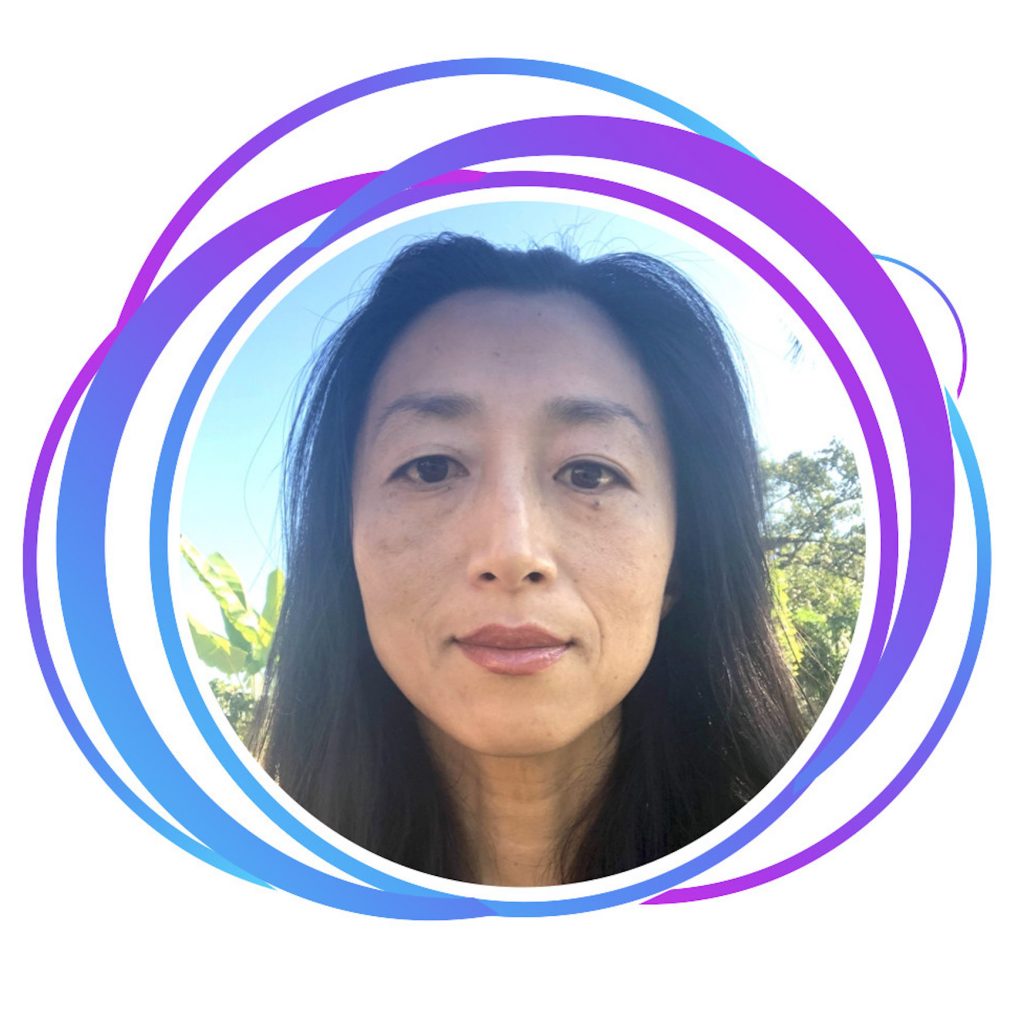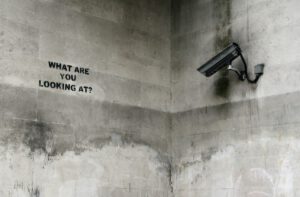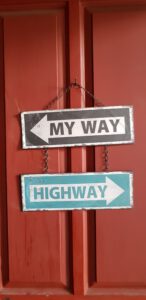From the busy streets of Tokio where she started her Ballet training, she moved to New York City to attend the Juilliard School. She went on to work for Twyla Tharp, Billy T Jones and French choreographer Angelin Preljocaj and always found time to pursue her own projects as well. Today she lives in a small beach town in Brazil, where I had a chance to speak to her. I do apologise for the weak sound quality in the first couple of minutes But these are live talks and it would have been weird to start over. Let’s give a warm welcome to our guest Toshiko Oiwa!
Please find the transcript of our conversation below:
SUMMARY KEYWORDS
dancer, dance, mother, company life, touring, choreographer, transition, injury, japan, juilliard, professional dancer, audition, europe, create, new york city, kaoru ishii, billy t jones, preljocaj, twyla tharp
SPEAKERS
Harald Krytinar, Toshiko Oiwa
Toshiko Oiwa 00:00
If you don’t like what you’re doing, then, like me, injury will happen. I really believe that my injuries happen to make me realize this kind of synchronization of your heart and your action. Does that make sense?
Harald Krytinar 00:26
I’m Harald and I bring to you stories from dancers and stage artists who share their experiences about career transition. From the busy streets of Tokyo where she started her ballet training, she moved to New York City to attend the Juilliard School. She went on to work for Twyla Tharp, Billy T Jones and French choreographer Angelin Preljocaj and always found time to pursue her own projects as well. Today she lives in a small beach town in Brazil, where I had a chance to speak to her. I do apologise for the weak sound quality in the first couple of minutes. But these are live talks and it would have been weird to start over. Let’s give a warm welcome to our guest Toshiko Oiwa!
Toshiko Oiwa 01:27
We live in Mata Atlântica, which is the rain forests in San Paulo state in Brazil, two hours and half away from San Paulo City, and whereby the beach. In a little town called Boiçucanga, which is the indigenous name.
Harald Krytinar 01:47
Well, most wonderful. But this is not where you grew up. And this is also not where you discovered dance. So I would be really curious to know, how did you discover dance? And where in what context?
Toshiko Oiwa 02:02
THE beginning… Okay. So my story started like this: I was born in Japan, a little outside of Tokyo, in the house of Ballet School. But my mother is a ballet teacher. And I had no choice to train, classic dance, classic ballet. Yeah, and it wasn’t, I said, train, I didn’t say dance, because it wasn’t dance for me. And I know a lot of dancers choose to dance, does it? Oh, pretty wonderful. It’s great to there. But I didn’t have any of those feelings until about 15 when I discovered other types of dance. Classical ballet, for me it was pure training. And my mother was quite strict and busy. Also with the dance ballet company. And so I didn’t really have a great relationship with dance. From the time I started when I was four until about 14 or 15. Yeah. So then I went to another part of Tokyo to junior high school when I was 13. Then I discovered just dance, choreography, making dances. And this was fun for me. When I finally opened up to the dance. But my childhood I would say it was really hard. And I wasn’t the princess type. You know, I didn’t have this admiration to be the classic, the ballerina, and the pointe shoes and all that I really wasn’t like that. So then afterwards, I discovered modern dance, contemporary dance, whatever you call it. And one of the choreographers who I worked with, recommended that I will go study at Juilliard in New York, and that was the only school I auditioned. Then I studied there for four years.
Harald Krytinar 04:29
You described your upbringing with dance and ballet. You mentioned that at 14-15, there was a different access to different kinds of dance. And that changed a lot for you having that access. And he also said that eventually you moved to New York to train at Juilliard – School of Performing Arts – and I’m just wondering, yeah, what age was that? And how did that develop for you to go to that school?
Toshiko Oiwa 04:57
I studied until 18 years is old in Japan, regular junior high and high school I finish with 18 years old, and by the time I went to Juilliard, I was 19. This school was recommended by my mentor, my teacher, well-known choreographer in Japan Kaoru Ishii, then I went to audition with my mother in New York, and I didn’t have any other option. I mean, not option. I didn’t want to study to get into a Japanese university. That was too much work for me. I just didn’t want to study. And I only sent a video of my small piece that I’d choreographed, then I was accepted. I was invited to audition. Then I went to New York and yeah, I passed the audition.
Harald Krytinar 06:05
You pass the addition, you went to the school and I wonder, When did you become first aware of the realities that this might be a profession for you?
Toshiko Oiwa 06:13
Right. When I went to Juilliard, I was still choreographing a lot. We had a little experimental performance group with my friends in Japan, that we produced shows in small theaters every year. And this group I mixed kinds of dance, but also videos and theater, we had spoken language also. And there was so much fun creating theater or dance. I don’t know the category of what we used to do. But so I was in this energy of I want to create more. Then I went to Juilliard, and it was pure training to become a professional dancer. And I almost left I if you don’t let me choreograph the first year, then I will leave there I was really, how do you say, stubborn or cheeky? But then I was convinced by this teacher that if I face my ballet training, more, which I kept escaping, then I could become a professional dancer then I, with the influence of some teachers at Juilliard, I became more interested in performing and the potential of me as a dancer. So I became a dancer throughout these four years at Juilliard,
Harald Krytinar 07:55
And what happened then, after the four years, how did that develop for you to become a professional dancer?
Toshiko Oiwa 08:01
Yeah, there were many auditions. It’s in New York City, right. So there are many companies coming to perform. And they hold auditions. So I audition for many companies, even during the school years, just to try. I didn’t have the intention to leave the school. But just to try out how this audition thing is. I tried some companies. And then at the end of the school, fourth year, Twyla Tharp had a huge audition all over the states. And in New York was the final city to audition. And I got into this company, it was called start with an explanation. And I went with, I worked with three other colleagues from Juilliard in this company.
Harald Krytinar 09:03
How did that develop for you? How long did you stay there? And how did you develop your professional ambitions or your professional path forward from there from your first contract?
Toshiko Oiwa 09:14
Yeah, this didn’t last for so long. And at that time, I was hopeful to be come a professional dancer and travel around and “Oh, this is so wonderful!”. Then once I became the professional dancer, I discovered all the negative side of it, and I really felt like a prison. I didn’t necessarily get along with the company members, and I wasn’t in love with the repertory and choreographer. And I had a good relationship but she was a very distant and she almost never showed up. And on tour. So I started questioning what am I doing? Getting on airplane and repeating the little hotels and small towns in the States. And then I was I became more and more unhappy in this work. Then one day I hurt myself in a rehearsal, and it was a big injury that stopped me from dancing for one year -a knee injury. Yeah.
Harald Krytinar 10:36
So you were injured for a year? What were the options at the time for you?
Toshiko Oiwa 10:41
At the time, I didn’t question other option than having surgery. It was an anterior cruciate ligament, important ligament in the knee and I couldn’t walk. I couldn’t even walk around my apartment for a few months, maybe. Then, ao I had an operation, which took me at the time, a year to recover, almost a year to recover. And teachers, ballet teacher helped me go back to my body and offered me free classes and I went back to Juilliard to study anatomy. And I became more interested in body, you know, this was a big injury, which stopped me, but then it opened another door for me about the body about healing, which I do today.
Harald Krytinar 11:42
Maybe just fast forward. I mean, you said you were off for a year. You wanted to continue as a dancer and you did come back as a dancer. You started to work with Billy T. Jones, I believe was that straightaway after this one year? How did that develop?
Toshiko Oiwa 11:57
Yes. Straight away. After one year. That’s right. I was so lucky to be invited to a workshop with Billy T. Jones. right when my American visa was expiring, and I was faced a few months left in the States. Then I went to this three-week workshop with Billy T. Jones in at the end of this workshop I got into the company.
Harald Krytinar 12:27
But that’s still not the end of I mean, you still continue your career, you move to Europe eventually. How did that idea come up with you? How did you end up in Europe? Where we actually work together at some point.
Toshiko Oiwa 12:41
Yeah, it was the fourth year of Billy T. Jones’s company, September 11, happened in New York City, and I was right in front. And then at the time, I was going through a personal difficulty also in a relationship. And I couldn’t stand where I was any more than New York City was so painful to be after September 11. Then I went to Europe by myself with two suitcases. But I’m going back to Japan, when I was 17, or 18. All of the dancers, the choreographers that I love were, they were Europeans. And I liked the dance. In the 90s. In France, of course, Preljocaj, Maguy Marin and these people, and I loved Mats Eck. And I didn’t really… I think American dance training was so wonderful. It made me so strong. But the kind of work that American choreographers were doing, I wasn’t so interested. Except for Billy T. Jones’s, of course, I loved working with Bill. But Europe for me was how do I say? A place that I one day, I wanted to work.
Harald Krytinar 14:26
And that’s what you did. You did take us two suitcases you did work in Europe. And I’m wondering it, you know, with the strong injury with also maybe those moments of change are very, very big change for you also, personally and professionally. You know, when did the first awareness come of the realities of retiring from a professional dance career?
Toshiko Oiwa 14:49
So like I said, I wasn’t gonna be a dancer. But it happened to me kind of I was intrigued used to dancing very young. But my desire was something else but well related to dance, but I wanted to be a creative creator. So throughout my dancer career, I was always wanting to go back to creating, and was always asking myself, when would I do this? When would I do what I really like to do. But then being a dancer, I discovered through the injuries, I discovered healing, I discovered yoga. And this was a new passion. This became my new passion also, and I went into studying healing, I do cranial sacral therapy. And I, I started with Reiki. But this became another side of me. So for me, it wasn’t like I will retire being a dancer, and do something else. It was gradual. Along the way, I picked up things that I like to do, and also wanted to go back, creating.
Harald Krytinar 16:27
So this very strong wish and force to wanting to create and do something that comes out of you. I think that’s what I picked up that was always present. And you reconnected with that, in a way through new discoveries through new experiences that you made on the way. Do you remember the period when you actually really when was your last season, your last weeks? Do you remember this time when you said well, this is the end of this doing this full time every day is Do you remember that time?
Toshiko Oiwa 17:01
For me, it was always the injury who stopped me with a Preljocaj also, I was going to continue. Then on stage, I got injured. And this determined stopping with a dance company, I stopped working with dance companies because of injuries. And this time I hurt my other knee. Then I think it was less serious. But it took about six months maybe to come back. Then afterwards I collaborated with visual artists and when travelling, I was picking up work in Korea, Japan, Germany, and I also went to Morocco. So it was a crazy two years of freelancing, after palatial cash, and I just went with the flow, you know, I created I taught at the university, and I danced. So that was two years of going flying around the world, of course. Let me tell you this, the best part for me of being a professional dancer was travelling. I probably danced in more than 20 countries and this mode of being nomad, you know, moving and performing, working and going to another country, another city. And this was also the mode of life that I adapted to my nature, and I really liked it and in a way, now I live in Brazil, but I still can connect to that. No match mode very much.
Harald Krytinar 19:22
How did you cope with this transition out of the company job into this freelance world?
Toshiko Oiwa 19:28
Yeah, I’m the crazy person who didn’t plan my retirement. You know, there were so many benefits in the company like Preljocaj. In France or in Europe, in general, the people can get maternity leave and so many benefits, but I didn’t plan any of that. The last years of the company, people around me were training to become a teacher or doing other Pilates, or, you know, other training to transition into something else. But in my mind, I was, yeah, maybe carefree, you know, maybe stupid in a way that I can then plan anything I just followed what it offered, there was a job in Korea. So I went, and there was an opportunity or my curiosity in Morocco. So I went, and this became us performance, then I really wanted to work with this person. So I worked and he offered me tour in Europe, you know, something like that. So I really didn’t have any concrete future plan. I just went with my intuition, or I just follow wave.
Harald Krytinar 20:56
When you look back at this period from having been a full-time professional dancer, into this transition period into the life that you have today. What do you think has been most important in a positive or even negative way to you?
Toshiko Oiwa 21:12
What’s the positive and negative compared to the time I was a dancer? And now? Is that your question?
Harald Krytinar 21:18
Yeah. How do you look back on this experience of transitioning?
Toshiko Oiwa 21:24
Right. So it’s a gradual transition for me. And one thing I want to tell you is that my importance of becoming a mother, and a lot of people don’t give a credit of being a mother, but it’s such a full-time job. And me personally, I didn’t really have much contact with my own mother, because she was a pure dancer, and the teacher and the super professionals of dance. And I guess I missed this mother figure very much in my life. So I consciously made the choice of dedicating myself to raising child raising children. And this was a really rewarding for me. So now my kids are 10 years old, and five. And we have a special child, we have a son with Down’s syndrome. And this made me I had to, to work longer being a mother. I still do. Of course everybody does. But this was giving me to be fully engaged as a work of a mother, and then slowly now I’m going back to being a choreographer or being a creator. So today, I consider myself maybe four or five things, and I’m still a dancer, I’m going back. After this Corona pandemic, it opened up the way of video works and online performances. So I’m going back as a dancer, choreographer, then I’m a yoga teacher, and I’m a healer, and I’m a, I’m a mother, I can’t credit it less of being a mother, because that’s a big part of me now.
Harald Krytinar 23:57
How do you look into your future today?
Toshiko Oiwa 24:01
This transitioning from one part of me to another has always been gradual. And also, it was always part of me, you know, so I continue fulfilling all these four or five qualities or job titles that I have. And I continue looking into that, working on it. And yeah, fulfilling my soul I guess, because I believe that we came here in this world with some kind of purpose and I don’t necessarily think one job title as my purpose. So I like to be better at being a mother, better at being and creator, or being better at healer, there’s so much more work study that I have to do to really help people to create better art. No. So I guess I will continue in all, all directions.
Harald Krytinar 25:25
I would like to ask something you mentioned earlier about this moving away from the company and following the opportunities that came up. And, you know, and also when it became clear to you say you still dance today, you choreograph, you create, you have all these other roles as well, of course. And I wonder, I mean, what was the support that was most helpful to move on in those transition periods? Right.
Toshiko Oiwa 25:54
Like I said, I didn’t take advantage of any support that I had. Oh, that’s not right. That’s not right. There was some benefit at the retirement from a company in France. So I got some financial support for some period of time, it was not much, but it was helpful. But what was really helpful for me moving forward and going after what I wanted to do, I guess, was, I would say, intuitions and drive. So things will come. If you are open to your desire, if you’re clear on your what you want to do, and you picture it, then the things will come. It sounds New Agey. Yeah, I know. But it’s kind of true. I think, Yang, right, Yang said the same thing. If you really like what you do, then you go into 100%, then the path will open for you.
Harald Krytinar 27:12
Is this the experience you had? Is this how it worked out? For you? Completely?
27:17
Yes, yes, if you have any resistance or feeling that you don’t really want to do like me as a ballet dancer, when I was a child, it doesn’t open. Right? It’s, it’s really obvious. And if you really love what you do, and you passionate about it, you put everything about you to what you want to do. So yes, money is necessary to survive, but you really don’t have to be afraid of it. trade off, like future stability, you have to have some savings, you have to have a house to be able to live until I don’t know 70, 80, 90. You don’t really that’s not the way to construct your life. I think that the fear, I observe in many people blocks you from doing what you really want to do, or discovering what you really want to do. So financial stability. I had to work on this also, that I had a big block in myself as to about money and about solid, some kind of stable job. But it’s the other way around, you really have to be following your heart. And that’s really simple. And if you trust it, if you follow it, your heart, then the path will open for you that I want to tell the younger generation or the people who are maybe afraid of going out of the comfort zone of a company that you receive salaries and they you get your paycheck and you can pay your rent. That is all good. But if you are holding on to your current job, just for that, and if you don’t like what you’re doing, then, like me, injury will happen. I really believe that my injuries happen to make me realize this kind of synchronization of your heart. And your action. Does that make sense?
Harald Krytinar 30:04
Yeah, that I can. Yes, that makes sense. I can hear and it’s the experience that you had you speak of this sort of alignment from your heart and your purpose and, and I wonder, do you feel today completely adjusted to your life to your new life? Do you feel that you are in tune with what your heart tells you and what you do with your actions?
Toshiko Oiwa 30:31
Yes, finally, after, like, almost 50 years, right? It took me a long time to find this place. And they took me a long, long way from Japan to the other side of the world, Brazil, and finally find my heart and my action aligned. Yes. But it took me this time.
Harald Krytinar 31:01
Do you think that any of those experiences, from your time as a dancer that really help you today for what you’re trying to do every day?
Toshiko Oiwa 31:11
Oh, it was so wonderful being dancer touring around and your colleagues worked in many countries. And today, I have friends in so many parts of the world. That’s so wonderful. And I also picked up some languages and in depth companies in Europe, some companies work in their own German or Swedish or, but but the English is the main language, I guess. But I worked in France and I, this company was mostly French language working. So I had to learn French, which was wonderful experience. And coming to Brazil, French was a base, you know, French and Portuguese is kind of a similar so it was smooth for me. And today I speak four languages, more or less, and I think I lost friends a little bit. But so that is a wonderful part being a traveler, Nomad, discovering many parts of the world that was also wonderful. And you cannot forget the disciplines as a dancer, you are always in communication with your body. And you have to care your body even your 50 or 60, then you can you have this closeness to your body, which is really wonderful. And this led me to research more about the body about the healing and discovering healing led me to learn more about the mind, you know, because body and mind one really connected. So yes, these are the positive things about being working as a dancer.
Harald Krytinar 33:25
If you could go back in time with a time machine, what do you think the most useful advice would be that he could tell your younger version of yourself?
Toshiko Oiwa 33:40
It’s gonna be okay, don’t cry so much. I used to cry so much. I was really not a happy dancer. Being a dancer wasn’t the height of my life. Although it brought me many things. But I was in Billy T. Jones’s company I was famous for crying so fast. And on tour I often felt very lonely and disconnected with with other dancers or the performance itself. Although I loved it. I was a suffering dancer, a suffering professional dancer, so I guess that’s it. It’s gonna be okay. Don’t cry so much.
Harald Krytinar 34:38
Do you think there’s anything else from your experience that you would like to share that you think would be helpful or that would be interesting to put forward?
Toshiko Oiwa 34:49
Yes. I’m thinking of this is mostly for dancers transitioning this We’ll stay with you forever. I mean, discovering cuz Oh no, the Butoh master. I was 20 years old, and he was 95. And he was starting to fall, but he danced until 103 or 104 that he died really until that the moment he died. And by the way, I think he started when he was 70. So for me, it’s dance continues in me, and I continue to perform. I’m going back. After having 10 years of being a mother, I’m 47 now. So you don’t have to think that after the company dance, career, dancer career your dance life stops. You know, there are many ways today, there’s YouTube, there’s Instagram Live. There are many creative ways to continue dancing, so don’t kill the part of yourself of being a dancer or being a performer or choreographer. And it was, it’ll always be with you. So I guess that’s it.




